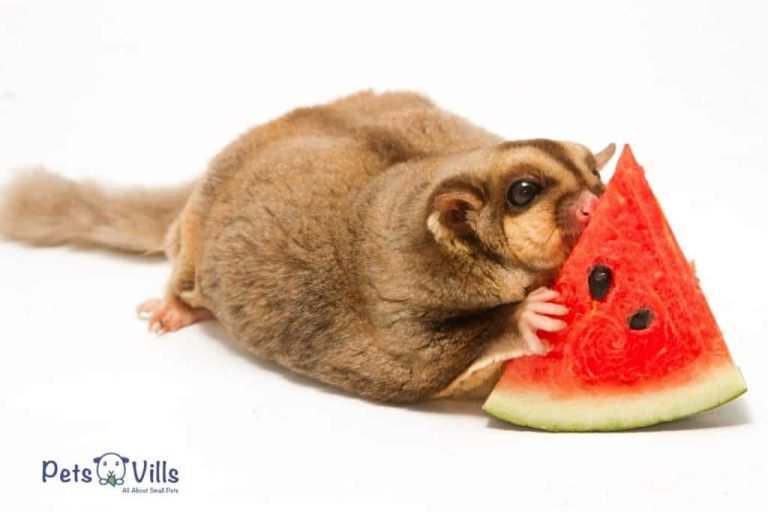Sugar Glider Temperature
Are you a proud owner of a sugar glider? These adorable creatures are known for their unique characteristics and appealing nature. As a responsible pet owner, it is essential to understand and cater to the specific needs of your sugar glider. One important aspect to consider is the temperature requirements for these small animals. In this article, we will explore the ideal temperature range for sugar gliders, the importance of temperature regulation, and some tips on keeping your little friend comfortable. So, let’s dive in and learn more about sugar glider temperature!
The Ideal Temperature Range for Sugar Gliders
Sugar gliders are native to tropical and subtropical regions, so they thrive in warm temperatures. The ideal temperature range for sugar gliders is between 75°F (24°C) to 80°F (27°C). This temperature range ensures a comfortable and stress-free environment for your glider. It is important to note that sudden temperature changes can be harmful to their health, so it’s best to maintain a stable temperature within the recommended range.

Importance of Temperature Regulation for Sugar Gliders
Temperature regulation is crucial for sugar gliders as they cannot tolerate extreme heat or cold. These animals are highly sensitive to temperature changes and are prone to heat stress or hypothermia if the conditions are not suitable. Here are a few reasons why temperature regulation is essential for sugar gliders:
1. Maintaining Metabolism:
Sugar gliders have a high metabolic rate, which means they require a warm environment to maintain their body temperature. When the temperature drops below the recommended range, their metabolism slows down, leading to lethargy and decreased activity levels.
2. Comfort and Well-Being:
Just like humans, sugar gliders feel more comfortable and at ease in a temperature range that mimics their natural environment. By providing the right temperature, you ensure their well-being and overall happiness as it allows them to exhibit their natural behaviors.
3. Reproductive Health:
Temperature plays a crucial role in the reproductive health of sugar gliders. A consistent and suitable temperature is essential for breeding and successful reproduction. Incorrect temperatures can disrupt their reproductive cycle and may lead to complications.
Tips for Maintaining the Ideal Temperature
Now that we understand the importance of maintaining the ideal temperature for sugar gliders, let’s explore some practical tips to ensure their comfort:
1. Temperature Monitoring:
Invest in a reliable thermometer to monitor the temperature in your sugar glider’s enclosure. Place the thermometer at a spot where you can easily read it, ensuring an accurate representation of the temperature.
2. Heating and Cooling:
During colder months or if your home tends to get chilly, provide a heat source such as a heat lamp or heating pad to maintain the desired temperature range. Similarly, in hotter environments, use fans or air conditioning to keep the temperature within the recommended range.
3. Avoid Drafts:
Ensure that your sugar glider’s enclosure is away from drafts or direct exposure to air conditioning or heating vents. Drafts can lead to abrupt temperature changes, causing stress to your glider.
4. Optimal Sleeping Environment:
Sugar gliders are nocturnal creatures and require a dark and quiet sleeping environment. Ensure their sleeping area is not subjected to direct sunlight or cooling breezes that may disturb their sleep.
5. Adjusting based on Seasons:
Take into account the seasonal temperature changes and make necessary adjustments to ensure your sugar glider’s comfort throughout the year. For example, during winter, you may need additional heating sources, while in the summer, proper ventilation and cooling techniques are vital.
Frequently Asked Questions
1: Can sugar gliders tolerate temperatures below 75°F?
While sugar gliders can handle slightly lower temperatures for short periods, long exposure to temperatures below 75°F can be detrimental to their health. It’s best to maintain the recommended temperature range to ensure their well-being.
2: What are the signs of heat stress in sugar gliders?
Signs of heat stress in sugar gliders include rapid breathing, lethargy, loss of appetite, and seeking cool areas within their enclosure. If you notice these symptoms, act promptly to cool down their environment and consult a veterinarian if necessary.
3: How do I cool down my sugar glider’s enclosure during hot weather?
To cool down your sugar glider’s enclosure during hot weather, you can use fans, provide frozen treats or water bottles, place frozen fruits in their habitat, or even consider using a portable air conditioner if necessary.
Final Thoughts
Creating an optimal environment for your sugar glider is essential for its overall health and well-being. By maintaining the ideal temperature range, you provide a comfortable and stress-free habitat for your little friend. Remember to regularly monitor the temperature, make appropriate adjustments, and seek veterinary advice if you notice any signs of discomfort or illness in your sugar glider. With proper temperature regulation, you can ensure that your furry friend lives a happy and healthy life!






